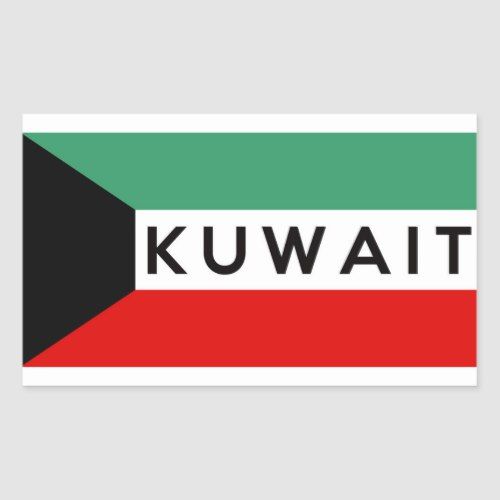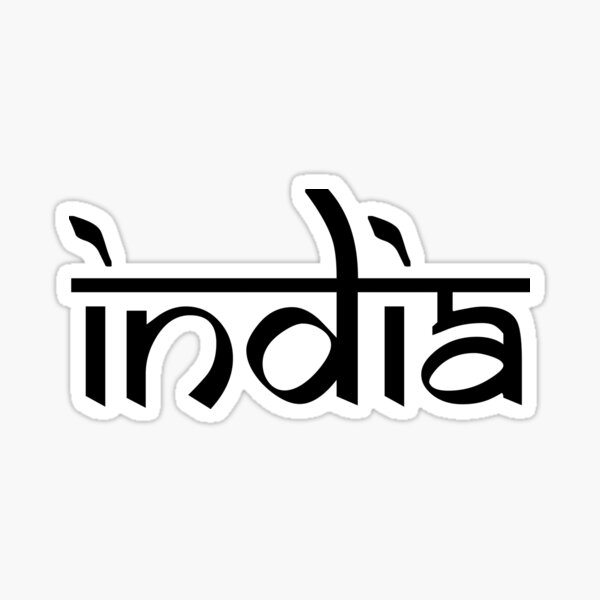Syllabus
Junior Diploma Part – 1
| Total Marks: 100 | Theory: 25 | Practical: 75 |
|---|
Theory
- Origin of Indian Dance in Mythology in brief.
- Names of Jaati of the Taalas in Bharat Natyam
- Knowledge of the South Indian Taalas Composed in three and four matras
- Knowledge of the first five Single Hand Gesture (Asamyukta Hasta)
Practical
- Preliminary Physical Movements
- Few Dance-Compositions in Tisram and Adi Taala
- Adavu- From No. (1) to No. (14) in Ekgun and Dwigun Laya
Junior Diploma Part – 2
| Total Marks: 100 | Theory: 25 | Practical: 75 |
|---|
Theory
- Knowledge of the “Jaati” of the Taalas in Bharatnatyam
- Knowledge of the following:
- Taalas composed of five Matras
- Taalas composed of seven Matras
- Knowledge of the first Ten Single Hand Gesture (Asamyukta Hasta)
Practical
- Adavu from No. 15 to 23
- Dance composition in the following Taalas:
- Taalas of five Matras.
- Taalas composed of seven Matras.
- Knowledge of the four Griva Sanchalan (Neck Movements).
Note: Course prescribed for the previous years included.
Senior Diploma Part – 1
| Total Marks: 150 | Theory: 50 | Practical: 100 |
|---|
Theory
- Origin and evolution of Bharat Natyam.
- Knowledge of South Indian Taalams According to their Jaati in Ekgun and dugun.
- Knowledge of Chatusra Jaati Rupak, Tisra Jaati Eka Taalam and Tisra Jaati Triputa.
- Knowledge of all the single Hand Gesture (Asamyukta Hasta) with hShloka.
- General introduction to the main classical dance forms of India.
- Ability to write all the bolls and taals learnt according to South Indian notation system.
- Write short notes on the following terms: adavu, Nattuangam, Korai, Teermanam and Vrittis.
Practical
- Physical exercise of the following parts of the body:
- Adavu from No. 24 to No. 50
- Practical knowledge of single hand gesture (Asamyukta Hasta) according to Abhinaya Darpan.
- Practical Demonstration of Head movements (Shiro Sanchalan).
- Knowledge of Modern Dances:
- Taala composed of seven matras
- Taala composed of ten matras.
- Ability to recite all the bolls and taalas learnt according to South Indian notation system.
Note: Course prescribed for all the past years included.
Senior Diploma Part – 2
| Total Marks: 150 | Theory: 50 | Practical: 100 |
|---|
Theory
- Contributions and biographical sketches of the following:
- Bala Saraswati
- Rukmani Devi Arundale
- The Tanjore Quartette: Chinnaiah, Ponnaiah, Shivananda, Vadivelu
- Knowledge of the Music and Musical Instruments used in Bharat Natyam.
- Devdasi cult in Bharat Natyam.
- History of the evolution of Bharat Natyam.
- Bolls of Adavu and Alarippu.
- Ability to write all the Bolls and Taalas learnt according to South Indian notation system.
- Short notes on the following definitive terms: Nritya, Natya, Sangita, Anga, Pratyanga and Upanga.
Practical
- Adavu from No. (51) to No. (76)
- Alarippu (a) Tisra Jaati Eka Taalam, Or (b) Tisra Jaati Rupak
- Pracical Knowledge of the combined Hand Gestures (Samyukta Hasta) with Shloka.
- Practice of Jaatiswaram: Adi Taala and Rupak Taala.
- Ability To Recite all the Taalas and Bolls learnt according to the south Indian Taala System Alonwith the Sketches
Note: Courses prescribed for the previous years are included.
Senior Diploma Part – 3
| Total Marks: 150 | Theory: 50 | Practical: 100 |
|---|
Theory
- Comparative Study of Bharat Natyam and Kathak Schools of Dance (Gharana).
- Knowledge of Nritya, Nritta and Natya.
- Complete knowledge of the Soth Indian Taala system.
- Life History and contributions of the following:
- Minakshi Sundaram Pillai
- Jaati Tayamma
- Venkata Lakshamma
- Definition of the following: Nataraja. Lasya, Tandava, Laghu, Drutam, Anudrutam, Adavu.
- Ability to write all the Taalas and Bolls learnt according to the South Indian notation system.
- Study of the following folk dances of India: Kalattam, Ghoomar, GArba, Bihu, Bhangra and Kummi.
Practical
- 1. One Jaatiswaram in any South India Raaga with any Taala.
- 2. One Shabdam: In Raagamallika and Misra Chapu Taala.
- 3. Any Folk Dance in South Indian Style.
- 4. Complete Knolwledge of the Sapta Taala and Panchajatti.
- 5. Ability to recite all the Taalas and Bolls learnt according to the South Indian notation System.
Note: Courses prescribed for the previous years are included.
Junior Diploma Part – 1
| Total Marks: 100 | Theory: 25 | Practical: 75 |
|---|
Theory
Knowledge of the following:
- Tali, Khali and Avartan
- Knowledge of Single and Dwigun Laya
- Knowledge of Tatkar
Practical
- Physical exercises of the following parts of the body:
- Head Movement
- Shoulder Movements
- To walk in Rhythm and to clap with music.
- Taalas prescribed: Teentaal and Keharva
- Two varieties of Tatkars in Teentaal
- Two easy Tukras in Teentaal
- One thematic dance in keharva
- Padhant of Tukra and Tora
Junior Diploma Part – 2
| Total Marks: 100 | Theory: 25 | Practical: 75 |
|---|
Theory
Knowledge of the following:
- Sam, Tali, Khali, Laya (Ekgun, Dugun and Chaugun) Salami, Tatkar.
- Definition of Lasya and Tandava.
Practical
- Physical exercises of the following body parts:
- Neck Movement
- Two varieties of Tatkars in Teentaal
- Five easy Tukras in Teentaal
- One Amad in Teen Taal.
- One thematic dance in any of prescribed taals of the course.
- Taals prescribed: Teen Taal, Dadra
- Padhant of Tukra and Tora
Note: Course prescribed for the previous years included.
Senior Diploma Part – 1
| Total Marks: 150 | Theory: 50 | Practical: 100 |
|---|
Theory
- Knowledge of Teen Taal with following concepts:
Laya, Taal, Matra, Tali, Khali, Avartan, Sam
- Definiton of the following:
Tatkar, Gatm Palta, Amad, Paran, Nritta, Nritya, Natya, Lasya, Tandava.
- Knowledge of following: Thaat, Dugun, Chaugun and Tihai.
- To write all the Tukaras of the course in single and dugun layakaries.
- Knowledge of writing Tatkar in ekgun, dugun and chaugun layakaries.
Practical
- Physical exercise of the following parts of the body:
- Head Movements, Shoulder Movements, Eye Brow Movements.
- To walk in rhythm and to clap with music.
- Teen Taal:
- Two varieties of Tatkars combined with hand movements in ekgun, digun and chaugun layakaries.
- Ten easy tukras.
- Four simple gats without chaal.
- One thematic dance in Teen Taal or Kaharva.
- Padhant or recitation of all the Tukaras learnt while making Tali with the hands.
Note: coures prescribed for the previous years included.
Senior Diploma Part – 2
| Total Marks: 150 | Theory: 50 | Practical: 100 |
|---|
Theory
- The importance of Ghungroos and their necessity in dance.
- Knowledge of the following:
- Six Angas
- Six Pratyangas and their Upangas
- Eight eye glances
- Four neck movements
- Six eyebrow movements
- Qualities of Ghungroos and their uses.
- Life sketches: Nirain Prasad, Shambhu Maharaj, Achchhan Maharaj.
- Definition of the following: Kavit, Chakardar, Paran, Gat, Salami, Asamyukta, Hasta (Single Hand Gesture).
- Writing in Notation all the Tukras, Parans in the prescribed Taalas.
Practical
- Further physical exercises of the following parts of the body such as Hips, Head, Knees and Wrists.
- Practice of Thaat, Kasak and Masak.
- Ability to perform all the Toras of the pervious course in Vilambit Laya.
- Teentaal
- Twelve advanced Toras.
- Two Parans
- Two Chakardar Parans
- Tow Amad
- One Salami
- Two Kavit
- One Paran Tisrajaati
- Jhaptaal
- Simple Tatkars in single and Dwigun Layakaries.
- Six simple Toras
- Tow Parans
- Three modern dances in Teentaal, Keharva and Dadra.
- Five Gat Bhavas with special attention to facial expressions.
- Practical demonstration of four kinds of neck movements and eight kinds of head movements.
- Practical knowledge of the Single Hand Gesture ( Asamyukta Hasta).
- Practice in Padhant.
- Practice knowledge: Teentaal, Jhaptaal, Keharva and Dadra.
Note: Course prescribed for the previous years included.
Senior Diploma Part – 3
| Total Marks: 150 | Theory: 50 | Practical: 100 |
|---|
Theory
- Definition and explanation of the following: Kasak, Masak, Kataksha, Thaat, Guru, Laghoo, Drut, Anudrut.
- Essays on the following: Kathak and Manipuri.
- The differences between the Kathak and Natwari dances.
- The history of the Indian dancing in brief.
- Definition of Raasa and Bhava.
- The dress and costume of the Kathak dance.
- Explanation of the meaning of Abhinaya.
Practical
- Physical exercises of the following parts of the body:
- Trunk Movements.
- Eyebrow Movements
- Thigh Movements
- Teentaal
- Four variations of advanced Tatkars and their Paltas.
- Two Traditional Amad
- Two Salami
- Two Chakardar Parans
- Three Kavits
- Four Gats of Gat Bhav and Nikas.
- Jhaptaal
- Four variations of advanced Tatkars and their Paltas.
- Two Amad
- One Salami
- Two Chakardar Tukras
- Two Chakardar Parans
- Ektaal
- Two variations of Tatkaras and their Paltas.
- Four simple Tukras
- One Amad
- One Salami
- Two Parans
- One Chakardar Paran
- Dhamar
- Two variations of Tatkars and their Paltas.
- Two simple Tukras
- One Amad
- One Salami
- Two Parans
- One Chakardar Paran
- Advanced Gats of Nikas, Ghungat, Matki, etc.
- Thaat with Kasak, Masak, etc.
- Padhant in all the above Taalas and of the previous ones.
- To differentiate between Lucknow and Jaipur Gharanas by demonstrating Toras, Parans, Gats, etc. of the both the Garanas.
- Practical Knowledge of the following Taalas with their thaat, Dwigun, Trigun and Chaugun Layakaries:- Teentaal, Jhaptaal, Dhamar and Ektaal.
Note: Course prescribed for the previous years included.


